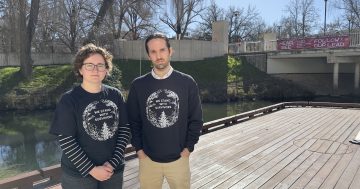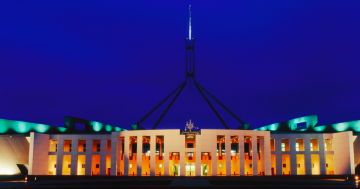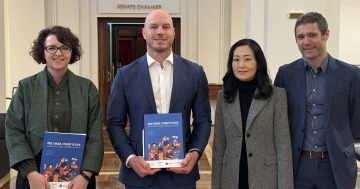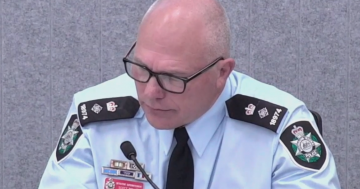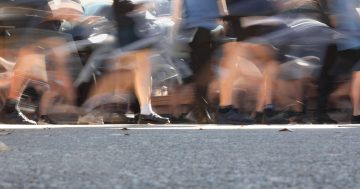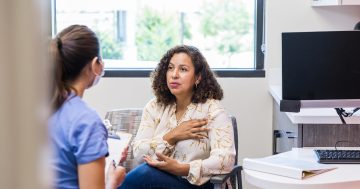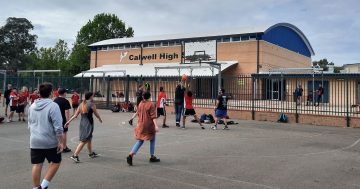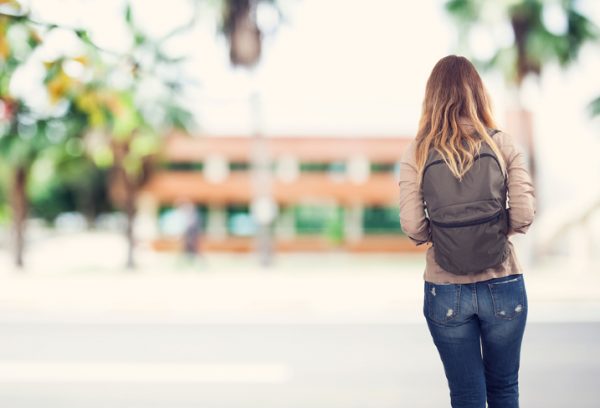
Female students were three times as likely as men to be sexually assaulted in 2015 or 2016 and almost twice as likely to have been sexually harassed in a university setting in 2016.
Leaders of the ACT’s two main universities have vowed to do more to prevent sexual assault and harassment after an Australian Human Rights Commission survey revealed at least 154 students had been sexually assaulted in 2015/16, 57 of them on campus or in a university setting.
ANU Vice-Chancellor Brian Schmidt and University of Canberra Vice-Chancellor Deep Saini both said one incident was one too many and have pledged to use the findings to take action on the issue.
The AHRC on Tuesday released the results of its landmark national survey and associated report, Change the Course: National Report on Sexual Assault and Sexual Harassment at Australian Universities.
It said more than 30,000 university students across all 39 Australian universities responded to the survey, with all of the universities committed to the work.
Overall, 6.9 per cent of students were sexually assaulted on at least one occasion in 2015 or 2016, with 1.6 per cent reporting that the sexual assault occurred in a university setting.
The report shows that sexual assault and sexual harassment are occurring to varying degrees across most areas of university life, with colleges a particular area of concern. Women were four times as likely as men to have been sexually assaulted in this setting, the survey found.
“Almost a third of sexual harassment reported in the survey occurred on university grounds or in teaching spaces, while one in five of those who were sexually assaulted said that this occurred at a university or residence social event,” said Sex Discrimination Commissioner Kate Jenkins.
Across all university settings, the Commission found that women were three times as likely as men to be sexually assaulted in 2015 or 2016 and almost twice as likely to have been sexually harassed in a university setting in 2016.

At the ANU at least 146 students of the 1447 respondents said they had been sexually assaulted in 2016, 52 on campus in 2016, while at UC, 38 (7.2 per cent) of 460 respondents said they had been sexually assaulted, five (1.1 per cent) in a university setting.
Professor Schmidt (above) said the sample size at the ANU was too small to provide more detailed information about whether students sought support, if they reported the assault, where the assault occurred and who the perpetrators were.
“Our first priority right now must be to support survivors and all those affected by sexual harassment or sexual assault,” he said. “We know this will be a traumatic period for you. If you are affected, please reach out to the support services on offer.”
The ANU has provided extra on-campus counselling for students and staff, including the specialist services of the Canberra Rape Crisis Centre.
Professor Schmidt said that of those 1477 ANU students who responded to the survey, 841 reported they had experienced sexual harassment in 2016, 517 of them at the university (excluding public transport).
“While women were overwhelmingly those subjected to harassment, 183 male students were included in this number. This is higher than the sector average. 59 per cent of those incidents involved someone known to the student,” he said.
In 74 per cent of those incidents, the perpetrator of the sexual harassment was another student and in five per cent of incidents, a lecturer or a tutor, while 82 per cent of harassment reports involved men as perpetrators.
The University of Canberra said of the 460 students responded to the survey, 26 per cent reported that they had experienced some form of sexual harassment in university settings during 2016.
Professor Schmidt said at least 620 students witnessed sexual harassment at the University last year, and that more efforts needed to be made so bystanders intervened.
At least 93 per cent of these students did not seek support or assistance from the University, mainly because students didn’t think the matter was serious enough (71 per cent) or because they didn’t think they needed help (58 per cent).
“The only positive is that only a tiny percentage – one per cent – were concerned that the University would not help,” Professor Schmidt said.
Professor Schmidt apologised to all those affected, saying the results were shocking.
“I pledge to the students and staff at ANU who are affected by sexual assault and harassment that we are acting, we will do more, and we will not cease until this stops happening in our community,” he said.
Professor Saini said UC had already introduced a range of initiatives, upgraded security and was currently undergoing a review of the university’s culture. More resources had been allocated to assist anyone in need following the report’s release.
“We will digest the report and its recommendations in the coming weeks and will assess the next steps for our university to build on the initiatives we already have in place,” he said.
The report includes nine recommendations – eight of which are directed at universities and one at university colleges.
They call on university leaders to implement the recommendations and develop measures to prevent sexual assault and sexual harassment.
The report urges an independent, systematic review of university responses to sexual assault and sexual harassment and their effectiveness, and the implementation of effective, evidence-based processes for responding to and preventing sexual assault and sexual harassment.
It also calls for a review of residential colleges and university residences.
Commissioner Jenkins said the report also found high rates of sexual assault and sexual harassment of lesbian, gay, bisexual, trans and gender diverse students.
The ANU results are available at http://imagedepot.anu.edu.au/scapa/Website/Australian_National_University_Summary_Tables.pdf.
The UC results can be found at http://www.canberra.edu.au/current-students/canberra-students/student-support/safe-and-respectful-community
The Change the Course report can be found at www.humanrights.gov.au/universityreport.












